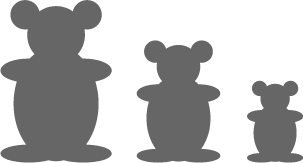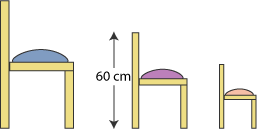Copyright © University of Cambridge. All rights reserved.
'Once Upon a Time' printed from https://nrich.maths.org/
Show menu
Why do this problem?
This problem is based on the story of the three bears which is a good context in which to talk about ratio and proportion. In this case, it leads on to calculating with fractions.
Learners will need to be familiar with finding simple fractions of quantities before tackling this problem.
Possible approach
You could start by telling, or re-telling, the story of the three bears. Many children miss out on traditional English stories and the background is helpful here.
After this you could introduce the problem itself so that the group can discuss it. One of the difficulties of this topic is using the language appropriately, and the more you can encourage the class to talk about the relative sizes of the bears' and Goldilocks's things, the better.
Next learners could work in pairs using this sheet so that they are able to talk through their ideas with a partner. They will be able to check that their solutions seem reasonable, given the information at the start of the problem and should be encouraged to do so.
The discussion at the end should consider the ideas about fractions and proportion introduced in the problem as well as the different answers to the questions posed. This is a good opportunity to check that the group are using the language appropriately and with understanding.
Key questions
If Mother Bear's chair is three quarters of the height of Father Bear's, what is one quarter of the height of Father Bear's chair?
So can you work out how tall Father Bear's chair is?
How can you work out the diameter of Baby Bear's bowl from the diameter of Father Bear's?
Why don't you try measuring the height of the beds?
What does it tell you about the sizes of the three bears at the beginning of the problem?
Possible extension
Learners could try these similar problems - Orange Drink or Timber!.
Possible support
Suggest starting by drawing the bears' chairs on squared paper and counting squares or trying this shorter, and therefore less daunting, problem - Cherry Buns.




